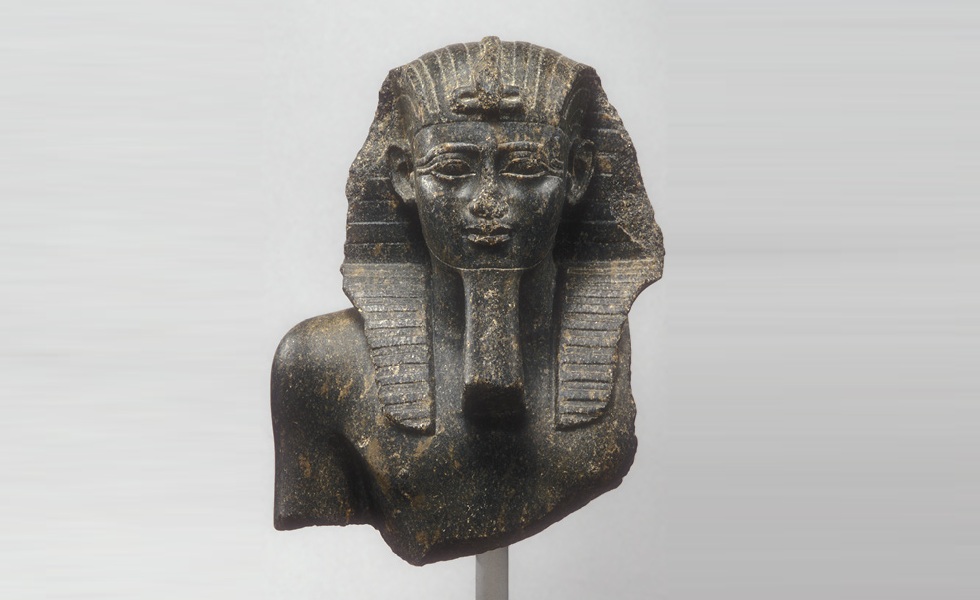
When Psamtik I became ruler of Sais around 664 BCE, Egypt was a shadow of its former self. For half a century it had been ruled by the 25th Dynasty, kings from Kush who had briefly restored Egypt’s unity and power under rulers like Piye and Taharqa. Their expansion into the Levant, however, brought them into conflict with the rising empire of Assyria: a contest Egypt would ultimately lose.
Between 671 and 667 BCE, the Assyrian kings Esarhaddon and Ashurbanipal invaded Egypt, captured Memphis, and forced Taharqa to retreat south. After their victory, the Assyrians withdrew most of their forces but left behind a network of loyal local princes to govern in their name. Among them was Necho I of Sais, the father of Psamtik.
A vassal of Nineveh
When Taharqa tried to reconquer Egypt, Necho I defected to him and was executed once Ashurbanipal had restored order. Psamtik was taken to Nineveh, where the Assyrian king spared his life and reinstated him as ruler of Sais: a pliant proxy through whom Assyria could rule indirectly. Egypt’s cities were garrisoned, its rulers paid tribute, and autonomy existed only at Nineveh’s discretion.
Psamtik’s legitimacy was fragile. To Egyptians, he was a collaborator. To Assyrians, he as a minor official. Yet from the Assyrians he absorbed valuable lessons in administration, diplomacy, and power. When their empire began to falter, Psamtik was ready.
From client to unifier
By the early 660s BCE, Assyria’s grip on Egypt weakened as its armies turned eastward. Psamtik quietly expanded his base from Sais, forging alliances with Delta princes and hiring Greek and Carian mercenaries through Phoenician ports.
His foreign contacts were aided by the Lydian king Gyges, who, after breaking with Assyria, sent mercenaries to support Psamtik’s bid for autonomy. This Egypt–Lydia connection opened the way for long-term Greek–Egyptian relations.
Between 660 and 656 BCE, Psamtik consolidated Lower Egypt. Then, in 656 BCE, he advanced south and secured the peaceful submission of Thebes, where the high priestess Shepenupet II, daughter of Taharqa, adopted Psamtik’s daughter Nitocris I as her heir. The act, recorded on the Adoption Stela, symbolized the reunification of Egypt and the beginning of the 26th Dynasty.
A few years later, a civil war (652–648 BCE) tore Assyria apart, ensuring that no retaliation followed. By about 650 BCE, Psamtik’s independence was secure. A new balance emerged in which Egypt and Assyria tacitly recognized each other as equals.
A tacit understanding
For the next quarter-century, Egypt and Assyria maintained an unspoken non-aggression pact. Assyria refrained from trying to retake Egypt, and Egypt stayed out of the Levant, Assyria’s western frontier.
For Assyria, this arrangement saved resources and prestige. For Psamtik, it meant peace to rebuild. His rule brought stability after decades of chaos: temples were restored, administration was reorganized, and Sais was established as a flourishing capital.
The Near East settled into two spheres of influence: Assyria in Mesopotamia and the Levant, Egypt in the Nile Valley. The Sinai frontier remained quiet for forty years, a cold peace sustained by mutual exhaustion and pragmatism.
The Saite Renaissance
Freed from foreign interference, Psamtik transformed Egypt into a stable and prosperous state. His army combined Egyptian levies with Greek and Carian troops, while his trade policy reopened Egypt to the Mediterranean world. Greek merchants founded Naukratis, the first officially sanctioned Hellenic port in Egypt.
Culturally, his reign saw a revival of classical Egyptian art and religion, consciously imitating Old- and Middle-Kingdom styles. This Saite Renaissance restored confidence and continuity after centuries of upheaval. Ironically, it owed much to Assyria’s restraint: its lingering power deterred enemies but no longer intruded on Egyptian affairs.
The fall of Assyria
By the 610s BCE, the Assyrian system was collapsing. Ashurbanipal’s successors faced attacks by Babylon and Media. For Psamtik, now elderly, Assyria’s destruction posed a dilemma: its disappearance would leave Babylon dominant across the Near East and remove the buffer shielding Egypt from Mesopotamian power.
Psamtik therefore intervened: not out of loyalty but out of necessity. Between 616 and 610 BCE, he repeatedly sent Egyptian forces north to support the remnants of the Assyrian army. The effort failed, and Assyria vanished soon after.
Still, the gesture was extraordinary: the king who had once served Assyria now tried to save it. What began as dependence had become pragmatic alliance.
His successor Necho II inherited this approach, and its perils. Marching north to aid the Assyrians, he clashed with king Josiah of Judah at Megiddo, marking Egypt’s re-entry into Levantine politics and the end of the long Assyrian–Egyptian détente.
The politics of survival
Psamtik’s reign was not a story of rebellion or liberation, but of strategic timing: of knowing when to yield, when to act, and how to turn dependence into strength. Few rulers managed the passage from vassal to sovereign with such precision.
In the great arc of Near Eastern history, his Egypt may seem a brief interlude before Persia’s rise, yet in political terms it was a masterclass in pragmatic statecraft. Psamtik turned Assyrian control into opportunity, Assyrian weakness into independence, and Assyrian collapse into temporary alliance.
This was not restraint but realism: the art of survival in an age of empires. And thanks to that art, Egypt endured, prosperous and self-governing, for another century.